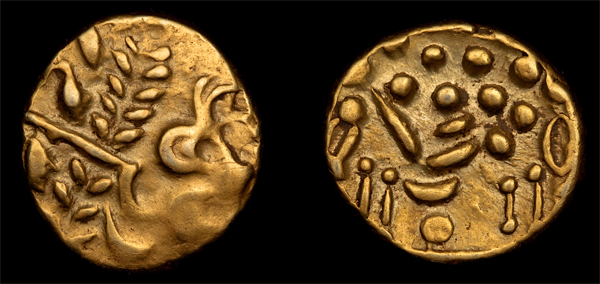
Unique ID: 96
The Carn Brea stater is one of the earliest gold coins struck in Britain, and is contemporary with the Insular Cf coins (see 29 and 41). British Aa is the start of the Westerham coinage series, and class 2 is the first one where the charioteer is replaced with a field of pellets and where the horse takes on the disarticulated angular appearance that is the staple of the derivitive British Ab (92), Ad (104), Af (97 and 121), B (5), Da (88), and Db (59) coins.
They are found both north and south of the Thames, from Dorset to Snettisham, making it difficult to attribute them to any particular tribe. Dr. John Sills posits that they might have been minted by the forerunners of the Atrebates (See “Divided Kingdoms” p118-119). They get their name from the Carn Brea hoard found in Cornwall in 1749.
